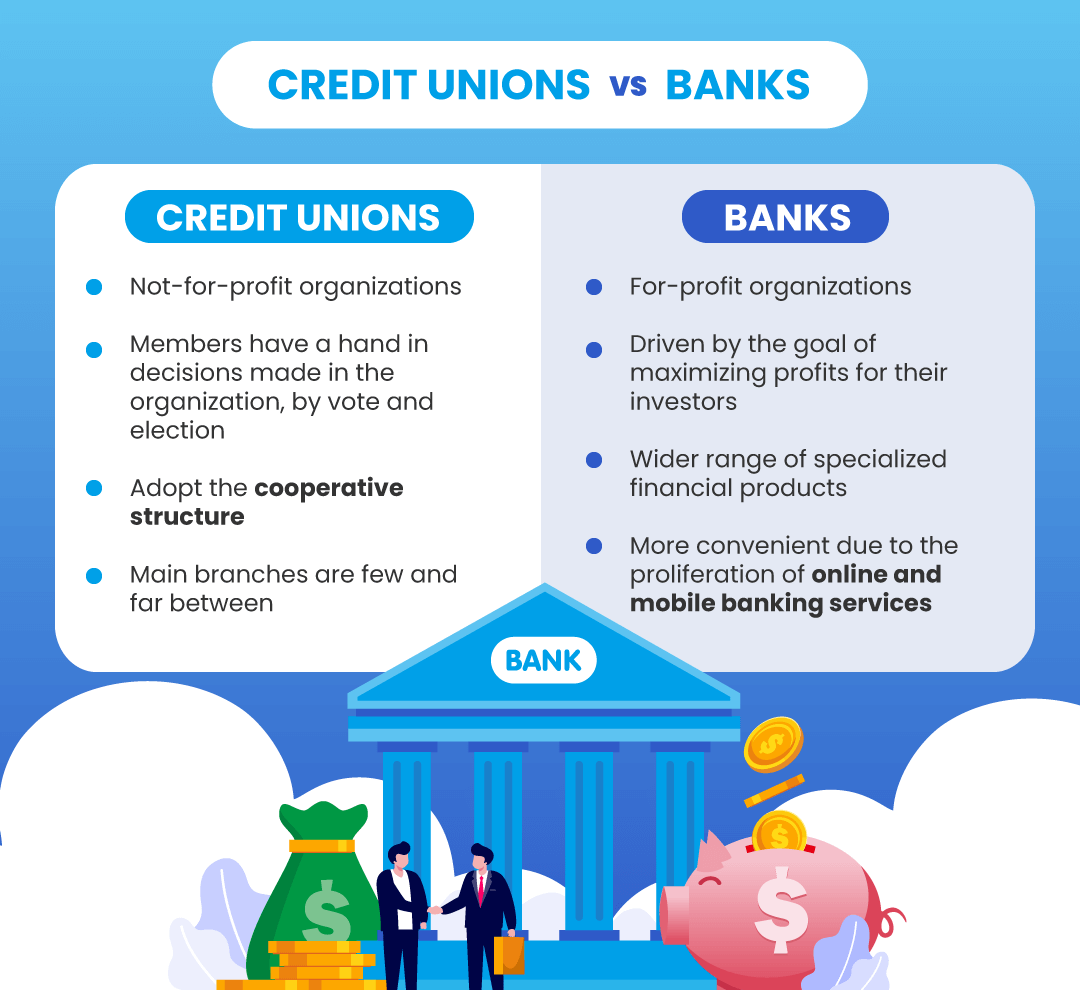Discover Top Credit Unions in Wyoming: Your Guide to Financial Solutions
Wiki Article
The Ultimate Overview to Recognizing Credit Unions
Credit unions stand as unique monetary entities, rooted in concepts of common support and member-driven operations. As we navigate with the details of credit report unions, an informative trip awaits to drop light on these member-focused establishments and exactly how they differ from traditional banks.What Are Credit Report Unions?
Credit report unions are member-owned economic institutions that use a variety of banking services to their participants. Unlike conventional banks, cooperative credit union operate as not-for-profit companies, suggesting their primary emphasis gets on serving their participants instead of maximizing earnings. Members of a debt union typically share an usual bond, such as benefiting the same company, belonging to the same area, or becoming part of the same company.One of the vital benefits of cooperative credit union is that they typically offer greater rate of interest prices on interest-bearing accounts and reduced rates of interest on finances compared to financial institutions. This is since lending institution are structured to benefit their participants directly, permitting them to hand down their earnings in the type of better prices and less fees. Furthermore, credit score unions are known for their customized customer care, as they focus on building connections with their participants to understand their unique monetary demands and goals.
History and Advancement of Cooperative Credit Union

The roots of member-owned financial cooperatives, known today as cooperative credit union, trace back to a time when neighborhoods sought alternatives to typical financial organizations. The idea of credit scores unions come from the 19th century in Europe, with Friedrich Wilhelm Raiffeisen frequently attributed as the leader of the participating banking activity (Wyoming Federal Credit Union). Raiffeisen started the initial identified cooperative credit union in Germany in the mid-1800s, stressing neighborhood support and self-help principles
The evolution of credit scores unions continued in North America, where Alphonse Desjardins developed the very first credit history union in Canada in 1900. Shortly after, in 1909, the very first U.S. lending institution was developed in New Hampshire by a team of Franco-American immigrants. These early cooperative credit union operated the essential concepts of mutual help, democratic control, and participant possession.
In time, credit scores unions have actually grown in popularity worldwide as a result of their not-for-profit structure, concentrate on offering members, and offering affordable monetary products and solutions. Today, lending institution play an essential role in the economic sector, offering community-oriented and accessible banking choices for people and services alike.
Subscription and Eligibility Standards
Subscription at a lending institution is generally restricted to people meeting specific qualification requirements based upon the organization's starting principles and regulatory needs. These requirements typically consist of factors such as geographic location, work standing, subscription in particular companies, or association with particular groups (Credit Unions Cheyenne). Cooperative credit union are known for their community-oriented approach, which is mirrored in their subscription needs. Some credit report unions may only offer people that work or live in a specific area, while others may be customized to staff members of a specific business or members of a particular association.In addition, cooperative credit union are structured as not-for-profit companies, implying that their key goal is to serve their participants rather than create revenues for investors. This focus on participant service usually translates right into even more customized focus, lower fees, and affordable rates of interest on cost savings and loans accounts. By meeting the eligibility standards and becoming a member of a cooperative credit union, individuals can access a variety of monetary product or services customized to their particular demands.
Providers and Products Used
Among the key aspects that establishes credit score unions apart is the diverse variety of monetary solutions and products they supply to their members. Lending institution generally offer typical financial services such as financial savings and inspecting accounts, financings, and bank card. Participants can likewise benefit from investment solutions, including retirement accounts and economic planning assistance. Several credit score unions use competitive rate of interest on savings accounts and financings, in addition to lower fees contrasted to conventional financial institutions.
Additionally, cooperative credit union usually offer hassle-free online and mobile banking choices for participants to easily handle their finances. They might supply benefits such as common branching, allowing members to access their accounts at various other cooperative credit union throughout the country. Some cooperative credit union likewise provide insurance policy products like home, life, and automobile insurance policy to assist participants protect their possessions and loved ones.
In enhancement to financial solutions, credit history unions regularly engage in neighborhood outreach programs and economic education efforts to sustain their members in accomplishing their economic goals.
Advantages of Banking With Credit Score Unions
When considering financial establishments, checking out the advantages of financial with credit score unions reveals special advantages for participants looking for individualized solution and competitive rates. One significant benefit of credit unions is their Wyoming Credit Union focus on tailored consumer solution. Unlike big banks, credit scores unions are member-owned and prioritize building solid connections with their members. This means that lending institution staff usually have a much deeper understanding of their members' economic requirements and can provide customized remedies to assist them achieve their objectives. Furthermore, lending institution are known for supplying competitive rate of interest on financings and cost savings accounts. Since they are not-for-profit organizations, debt unions can commonly offer reduced funding rates, greater savings prices, and lower costs compared to traditional financial institutions. This can lead to considerable price financial savings for members gradually. Generally, financial with a lending institution can supply a more personalized, cost-effective, and member-centric monetary experience.Final Thought

Credit rating unions are member-owned monetary organizations that use an array of financial solutions to their participants. The principle of credit rating unions originated in the 19th century in Europe, with Friedrich Wilhelm Raiffeisen typically attributed as the leader of the participating financial activity.The advancement of credit unions continued in North America, where Alphonse Desjardins established the initial credit rating union in Canada in 1900. Credit scores unions usually supply conventional banking services such as savings and checking accounts, car loans, and credit report cards.When thinking about financial institutions, discovering the benefits of financial with credit score unions exposes distinct benefits for participants looking for customized service and affordable prices.
Report this wiki page